It took less than a year for “Hearable” to replace “hearing aid” in the media. That remarkable event happened on August 12 when Forbes headlined a “face-off” between two Hearables, which turned out to be Starkey’s Halo versus GN Resound’s LinX2 hearing aids. As Forbes puts it:
High-end digital hearing aids keep getting better and better. … For the past year, two manufacturers have made top-of-the-line “hearables” that integrate specifically with the iPhone.
When the Big 6’s premium products get tossed into the Hearables commodity mix–albeit at the top end–it’s time for Audiologists and manufacturers to pay heed to what else is happening in the mix.
Heeding Hearables at HHTM
Readers will find up-to-date Hearables coverage from various angles in recent posts at HearingHealthMatters, in addition to the multi-part Hearables series in Hearing Economics which commenced November, 2014.
- August 18 & 25, Mead Killion: Boundary Areas Between PSAPs and Hearing Aids, part 1 and part 2
- August 11, Brian Taylor: Investment in Hearables Continues to Grow Rapidly
- July 21, Amyn Amlani: Efficacy of Smartphone-Based Technology in Improving Hearing Aid Adoption Rates
- July 1, Terry Ross: Terry Takes on Hearables
- February 11, David Kirkwood: Hearing with Your Tongue
New and Pending on the Market
Hearables that Call Themselves Hearing Aids
Jacoti ListenApp. This free hearing app had a new release on March 15 (see Comment section). It’s the first FDA-registered medical hearing aid device and calls itself a “software based hearing aid.” Users provide an audiogram from an audiologist, although a self-fitting audiometry tool is in the works.
Jacoti runs on mobile iOS products, (Jacoti BVBA, 2015) or via a server connection on Mac computers. Users can store hearing profiles in the cloud, share them with other devices, access third party sound applications on iOS products, and connect to the Jacoti server for far field and group listening.
Eargo. An FDA-registered hearing aid, this one looks like a Hearable and prices out like a pair of mid-level hearing aids ($1980/pair). Called the “cool hearing aid” by one reviewer, Eargo’s tiny, modular sizing and slogan (“Beautifully designed to never be seen”) aim to diminish stigma and appeal to younger wearers already familiar with Earbuds.
No audiogram required for users who self-select among 4 programs. Those who go with custom programming need a recent audiogram and an extra $500. (Update: see a comprehensive, concise review of this device by Abram Bailey at Hearingtracker.com)
iHear Medical’s iHear HD (“world’s first high quality invisible hearing aid that allows you to select settings at home for under $200“) has been on the drawing board since late 2013. It moved from crowd-funding (indiegogo) to venture capitalization and was briefly reviewed at Hearing Economics in January of this year.
iHearHD remains in investigational mode while traversing the FDA application process and patenting its concepts. The product is set to release in November.
Hearables that Don’t Call Themselves Hearing Aids
This category comprises all PSAPs in production, including the venerable Bean, Sound World Solutions, and the recently arrived Soundhawk. These products are available, wireless, and aimed to amplify environmental sounds in “certain situations.” Mead Killion’s post this week provides in-depth coverage of PSAPs, past, present and future.
Hearables that Do Other Things
Most Hearables on the market that don’t call themselves PSAPs are Wearable sensors that don’t amplify sound. The big player is Valencell, which doesn’t sell Hearables but does provide its patent protected PerformTek-powered sensors to licensed Hearable manufacturers.
At present, the sensors mainly monitor heart rate in feature-laden products sold by several manufacturers:
- Jabra Sport Pulse earbuds: wireless, music streaming with Dolby sound, real-time voice coaching
- iriverON personal trainer
- LG Heart Rate Earphones
- SMS Audio Biosport In-Ear Wired Ear Bud: noise reduction, music streaming
Hearables Hovering in the Wings
Most Hearables are not available, despite the hype and burgeoning funding. Here are a couple on the production horizon.
Doppler’s Hear Active Listening System made its $250K nut on Kickstarter early this summer, then snagged $17M in venture capital to see the product to market by the end of the year.
Hear has captured the hearts, minds, and superlatives of the techie crowd: TechCruch describes Hear as “a computer, a microphone, and a speaker all stuffed into a tiny earbud.” Wired says it’s “not a pair of headphones and it’s not a hearing aid;” instead, it’s a pair of “sci-fi earbuds.” Rolling Stone, Quincy Jones, and Hans Zimmer have all hopped on the Hear wagon.
Hear does not stream content, sense bodily functions, or have automatic functions, but it is wireless. Doppler’s sole, well-funded vision is wireless earbuds that “curate” the audio world in real time by enabling wearers to adjust gain up and down with a phone app (slogan: Change the way we hear the world). How is this not a PSAP?
Bragi’s Dash is another wireless in-ear kickstarter project that’s generated lots of buzz since the beginning of the year (slogan: “World’s first wireless Smart headphone“). Unlike Hear, Dash doesn’t curate or amplify. Bragi’s vision is a Hearable that’s uber-loaded with sensors. Dash remains in pre-order mode, months behind the originally scheduled April, 2015, debut.
Nuheara (“the first wearables company to list on the ASX“) emerged from stealth mode in Australia as a proof of concept device at the May 2015 Wearable World conference. It’s produced in partnership with Curtin University of Technology and Wearable World, owned through a reverse-merger by Wild Acre Metals, Ltd. (ASX: WAC), with talk of a future crowd-funding plan on Indiegogo. No indication of expected battery life or when this is due on the market. Such is the life of a Hearable these days.
Nuheara forgoes sensors in favor of Bluetooth streaming and PSAP-type amplification (S/N manipulation, stored preferenced), using taps on a wireless earplug and a Smartphone app. Described as a “hybrid between assisted listening devices, Bluetooth earplugs and noise-cancelling headsets without cables or wires,” the device’s slogan is “Hear what you want to hear.”
Invisible Hearables, But Not in a Good Way
Not all products make it to market, especially crowd-sourced product ideas. The much-vaunted, “invisible” Nanoplug rose and fell this spring, apparently taking its funders down with it.
Nanoplug styled itself as a hearing aid. It looked very cool on the drawing board but its business case looked shaky. Interested readers can click here to read the low-down on this now truly invisible device.
Trends
These are a few discernable trends and features that may survive and thrive in the budding Hearables market.
- “De-Stimatizing” by Design. It’s important for Hearables to appeal to younger, hipper people by eliminating the hearing aid stigma. The invisibility factor is a time-honored means of attacking stigma. Eargo gets a gold star in that category.Techie physical design is another means of eliminating stigma, as noted in the Forbes article at the beginning of this post:
“Both [Halo and LinX] are more highly crafted than their predecessors and designed for visual appeal… offer[ing] bright, pop color casings … [in] an attempt to shift public perception from embarrassing medical necessity to coveted high-tech gear.”
Not all tech looks are embraced by the market, as evidenced by the plummeting mobile Bluetooth headset market. Hearables that look like Bluetooth earpieces, wireless or not, are probably facing a makeover if they want to stay on fashion runway. And, though some call Doppler’s Here a fashion-forward look, this writer thinks the market may not latch on to something that resembles an old-fashioned Alka Seltzer and acts like a basic PSAP. Time will tell.
- Wireless. Everybody wants wireless, but not everybody agrees on what that means. The hearing aid industry considers wireless to be … wireless. Halo and LinX have no wires. The same can’t be said of some Hearables (Fig 3), which are wireless only from the neck down. This is going to have to change with future devices if Hearing Aids and Hearables are to occupy the same consumer space in the market.
- Multitasking. Ears are for hearing, as hearing aids have always known and normal-hearing folks are beginning to appreciate as Hearables start augmenting a plethora of audio. Ears are good real estate, too, as ExtremeTech makes clear:
“.. the ear is a far better place to access vital signs than then the wrist. Not only can one get accurate heart rate readings from the ear, but core body temperature levels as well.”
-
Accessory Pricing. Fashion-driven ear devices de-stigmatize by adding glamour and add price points as complementary goods. Hearables run both gamuts: dorky to cool, free to premium-priced.
Tying ears to must-have, branded devices is a good move which encourages design innovation and widens price lining. That’s a good plan for attracting new wearers and offering more to aficionados. The Forbes article captures the vision:
At a price point of about $6,000 a pair, turning hearing aids into iPhone accouterments is smart marketing.
- Big Data. Data-Driven marketing and development guide innovation and predict purchasing decisions. Tracking sensor data, audio inputs, and wearer listening choices is a major attraction. ExtremeTech states it bluntly:
“…be under no illusions: Big data and machine learning are the real justification behind much of the commercial interest in wearables.”
The Economic View for Traditionalists
Independent Audiologists and hearing aid manufacturers probably find themselves a bit puzzled, if not reeling, from the fast-track Hearable trajectory. The elephant in our room is that Hearables are retail devices that can sell for about 1/10th the price of an advanced technology hearing aid with fitting and follow-up. Margins are vanishingly thin for hearing aid manufacturers who must run their products through FDA regulations.
The role of Audiologist is seemingly absent when devices are self-fit and self-adjusted by consumers. The role of manufacturers is diminished when “devices” are apps running on something akin to an earpod. Turf protection is our natural reaction, manifest by licensed selling, device regulation, tax credits, and insurance coverage. Efforts to preserve the sanctity of hearing aids in the face of Hearables growth conjures an old adage that will likely be proven out:
“If it moves, tax it. If it keeps moving, regulate it. If it stops moving, subsidise it.” The Week (British edition) 15 Nov 2014
This is the 13th post in the Hearable series. Click here for post 1, post 2, post 3, post 4, post 5, post 6, post 7, post 8, post 9, post 10, post 11, post 12 and post 14.
feature image courtesy of Derrick Lin‘s Figuratively Speaking series



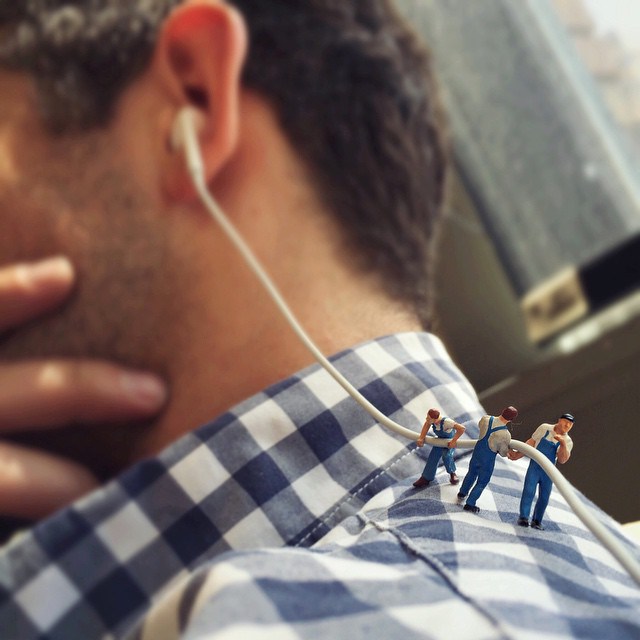
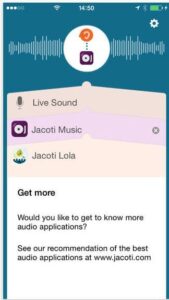

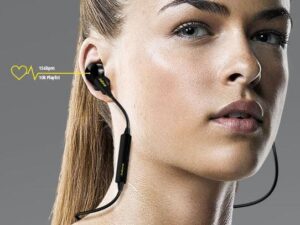

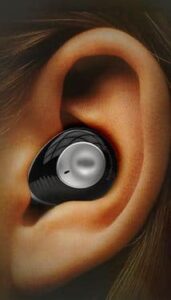
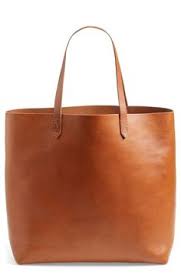




Great list! Just one little correction: Jacoti has been around since 2013 but released their last update in Mar 2015. Interesting how they’ve been stealthy for so long.
Thanks for improving the post. I hope others will chime in and make the list better too.